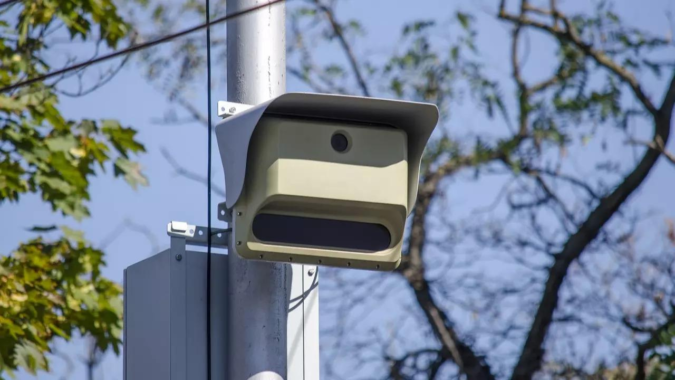Pedestrian deaths have been rising nationwide over the last decade, and last year they reached their highest level in 41 years. In California, an estimated 1,100 pedestrians were killed in 2022, making the fatality rate in the state 25% higher than the national average.
But what can be done about it?
Some traffic safety advocates are banking on a bill that’s moving through the California Legislature. It would make California the 19th state to install cameras that would automatically issue tickets to the owners of vehicles that are spotted exceeding the speed limit by at least 11 mph. According to the National Transportation Safety Board, speeding is a factor in one-third of traffic fatalities nationwide.
“It’s not going to solve everything, but we need all the tools we can get,” said Damian Kevitt, the executive director of Streets Are For Everyone, a traffic safety nonprofit based in Los Angeles that supports the bill. “It’s quite truthfully, at this point, a public health crisis.”
The bill, AB 645, would create a five-year pilot program that would place cameras in six cities – Los Angeles, San Jose, Oakland, Glendale, Long Beach and San Francisco – on streets that are hot spots for street racing, or are in school zones, or have a high number of collisions.
At the outset, vehicle owners would get a warning the first time their vehicles were caught speeding by the cameras. After that, fines would start at $50. The fines could be reduced if the vehicle owner is unable to pay.
“The ticket is nominal, and there’s no points on your license,” said Assembly member Laura Friedman, who co-wrote the bill. “We’re out to change behavior. We’re not out to be punitive.”
The bill, which has passed the Assembly and is now before the Senate, has a long list of supporters, including Mayor London Breed of San Francisco and other local leaders from across the state, several bicycle and pedestrian advocacy groups, and the ride-hailing companies Lyft and Cruise. But there are also plenty of detractors, including the advocacy groups Oakland Privacy, Black Lives Matter California and ACLU California Action.
Becca Cramer-Mowder, a legislative advocate for ACLU California Action, said that the organization was worried about any program that increased surveillance within communities. The bill has some safeguards, including allowing only license plates to be photographed (instead of, say, faces), and requiring that images be deleted after a certain amount of time, but Cramer-Mowder believes those measures aren’t foolproof.
“The only way to fully protect against the privacy issues is to not collect the data in the first place,” she said. “What we’ve seen in other contexts is that despite these strict limits, surveillance footage and information is still inappropriately shared.”
Cramer-Mowder and others who oppose the bill support other ways of encouraging drivers to slow down, including by adding speed bumps and traffic circles to streets.
Such features are uncommon in poorer communities of color, where some roads essentially become speed traps. If cameras are added to those streets, opponents say, even more tickets will be issued to Black and Latino drivers.
Tracy Rosenberg, the advocacy director for Oakland Privacy, told The San Francisco Chronicle that there was a long history of speeding enforcement programs “disproportionately impacting lower-income communities of color.”
“And that is largely because of a long, long history of traffic infrastructure that has brought certain traffic-calming features and amenities to more affluent neighborhoods, and not so much to less affluent neighborhoods,” Rosenberg said.
Friedman said that she, too, supported more traffic-calming measures, but cited an analysis saying it would take Los Angeles more than 100 years to upgrade all its high-risk roadways. The cameras are an additional means of trying to reduce traffic collisions, she said.
Friedman added that many people from communities of color supported the bill. “Let’s not forget the people who are most likely to be killed and maimed by traffic violence are low-income communities of color,” she said.
This article originally appeared in The New York Times.
